What I Found the Most Remarkable Was The Fish!
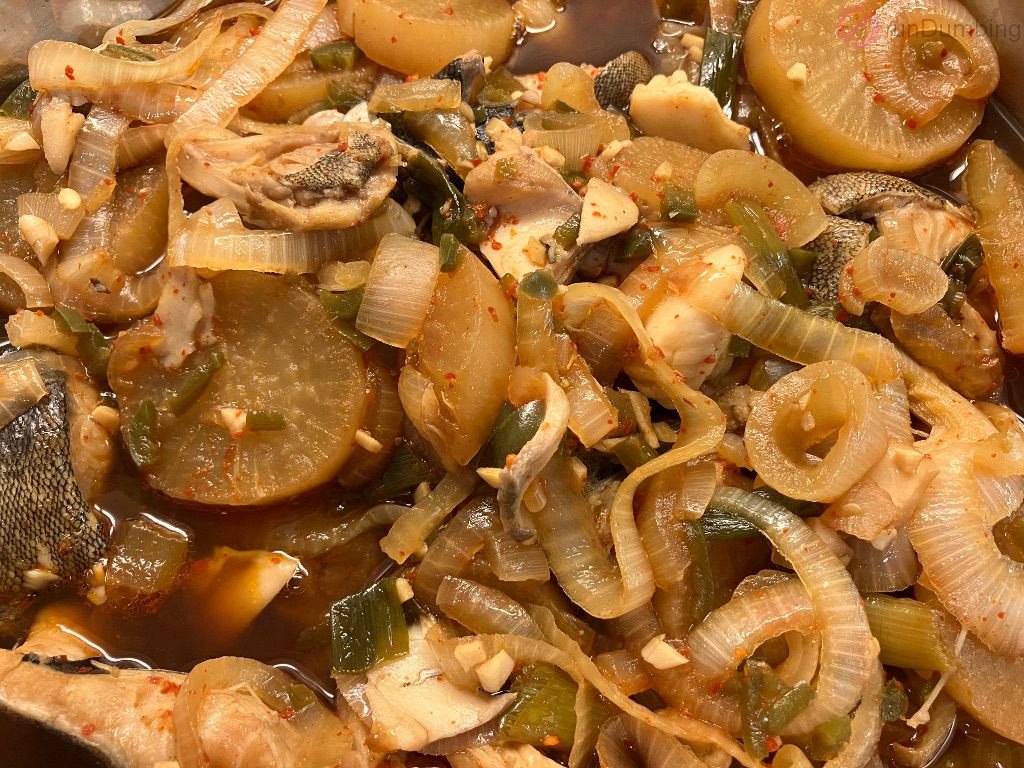
A few months ago, I tried my second Korean braised fish recipe, the first of which is posted here. If only I could’ve just eaten the fish and all the vegetables in the dish…
Below are some links to more details, including photos:
My Story
I’ve seen belt fish at the local supermarket many times before and was curious about recipes for them. After some research, I found one at maangchi.com. However, I changed my mind on using it because my family prefers not to eat boney fish.
Afterwards, I checked out other recipes and content on the website, including a list of worldwide Korean stores and a forum. In the end, I found a recipe for a fish that has fewer small bones.
Inspiring Recipe
The recipe that I decided to try from Maangchi’s website was Braised black cod with radish.
First Try
After saving the recipe for a few months, black cod finally went on sale at the supermarket, so I purchased one along with the other perishable items listed. Luckily, I already had the ingredients for the sauce, so that saved me some time on shopping.
Ingredients to Use
With 2.17 pounds of black cod, I tried my best to increase the remaining ingredients as proportionately as possible. What I ended up using were as follows:
Main
- 2.19 pounds of Korean radish
- 35.52 ounces of onion
- 9 green onions
- 4 green chili peppers
Seasoning sauce
- 1/2 cup + 3 1/2 tablespoons + 1/8 teaspoon of soy sauce
- 14 garlic cloves
- 2 tablespoons + 1/2 teaspoon of gochugaru (Korean hot pepper)
- 1/2 tablespoon + 2/3 teaspoon of sugar
In addition, instead of fillets, I bought a whole black cod and had the fish monger cut it into steaks. The pieces ranged from 1.5-7 inches thick rather than 3 inches, as noted in the recipe.
Also, I referenced the article from the CulinaryLore’s website, What Size are Small, Medium and Large Onions and How Much Does Each Yield Chopped?, to estimate the amount needed for the onion.
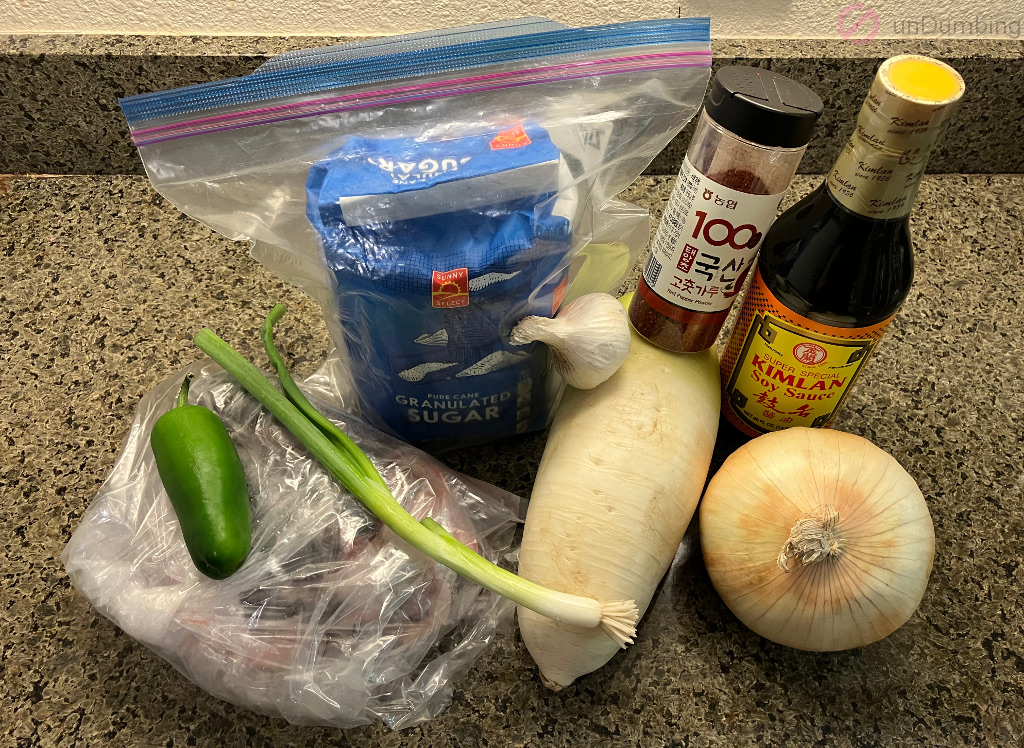
Steps to Prepare
As for the directions, I followed every step as written except for the following:
- Step 2 – Instead of 2 cups of water, I increased it to 4 because I was making about 2x the default recipe.
- Step 7 – Even though the broth didn’t appear to have evaporated much after 7 minutes, I stopped waiting, so the fish would stay tender.
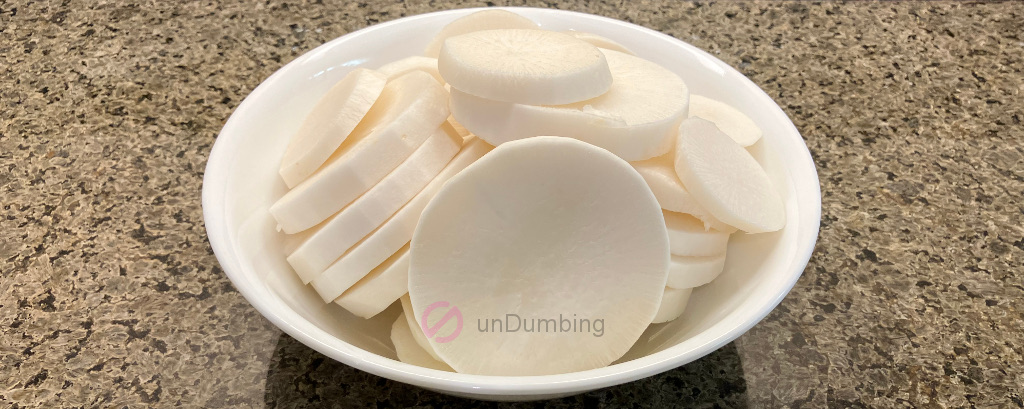
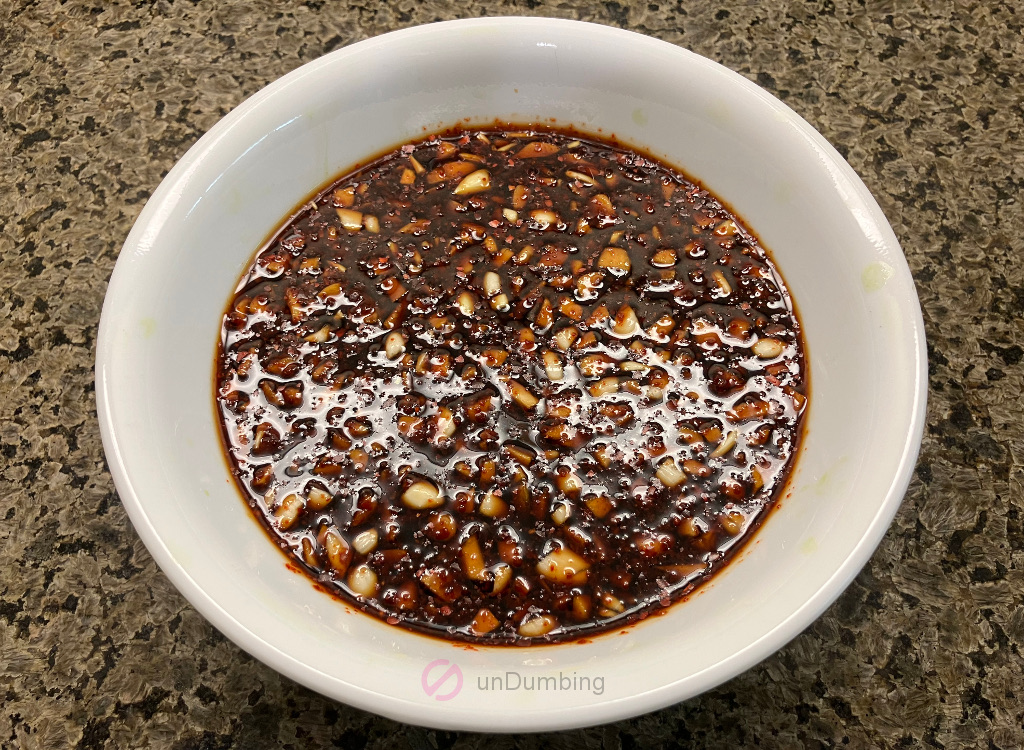
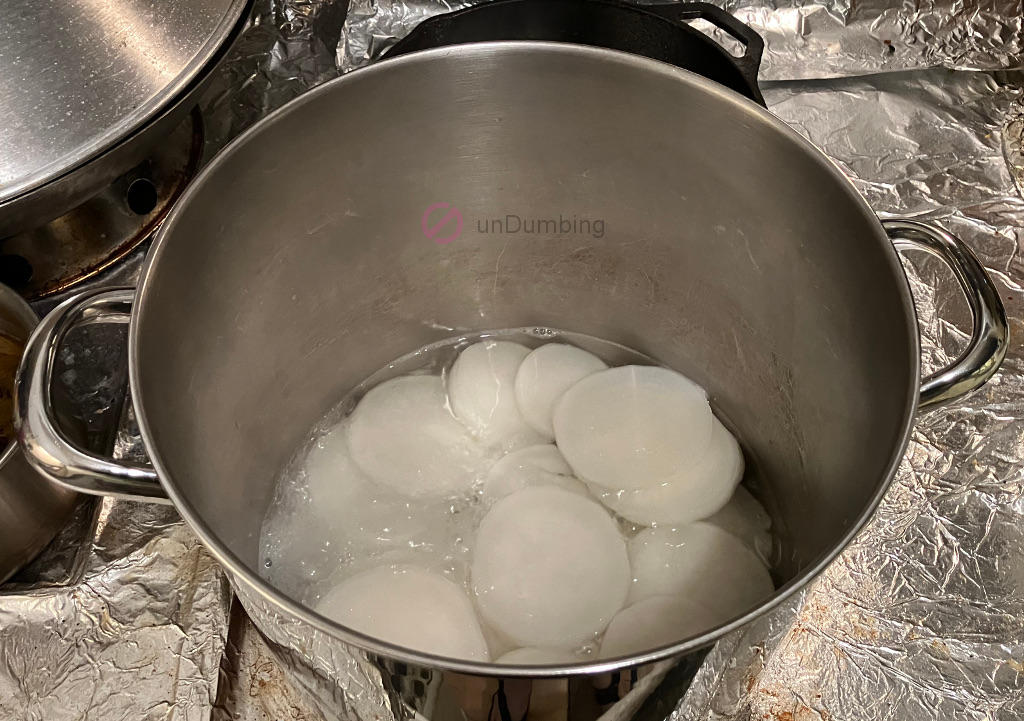
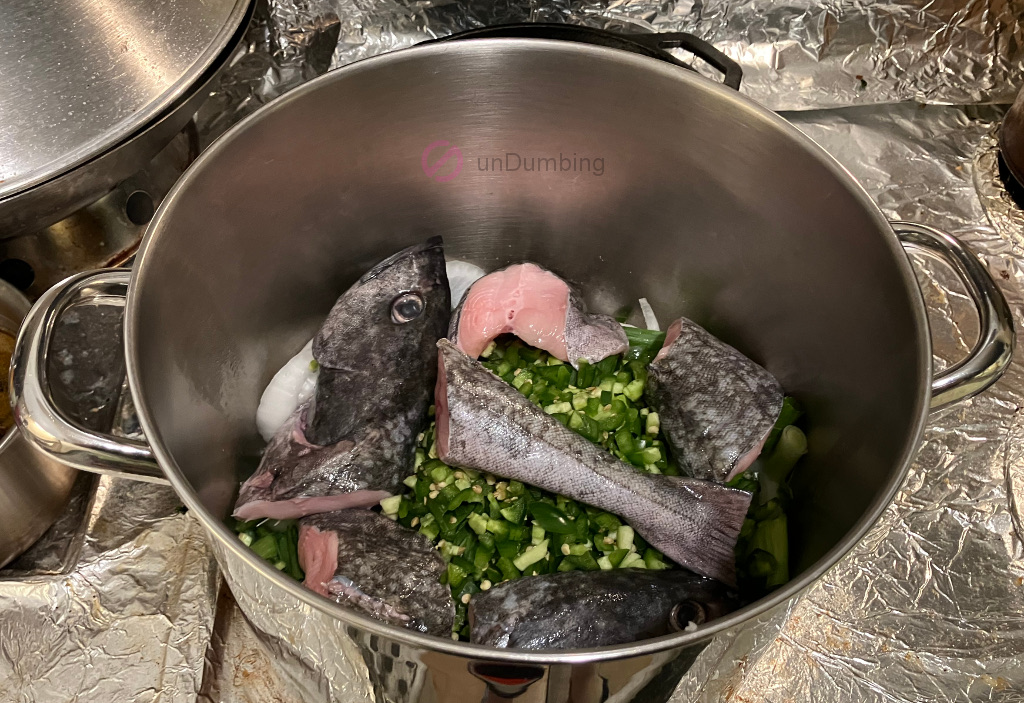
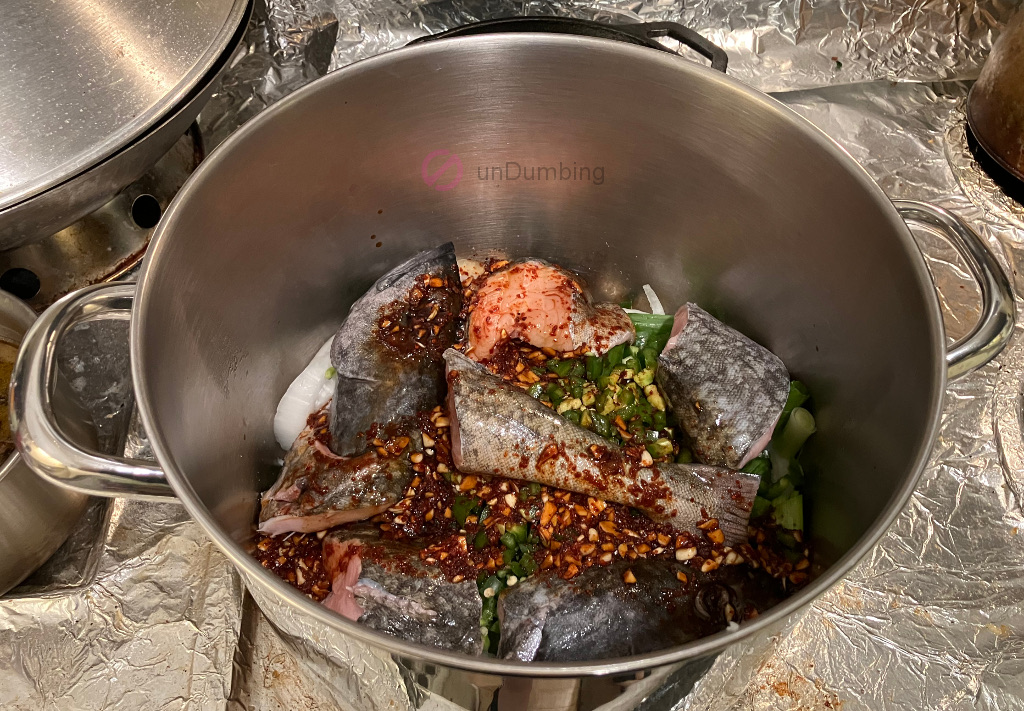
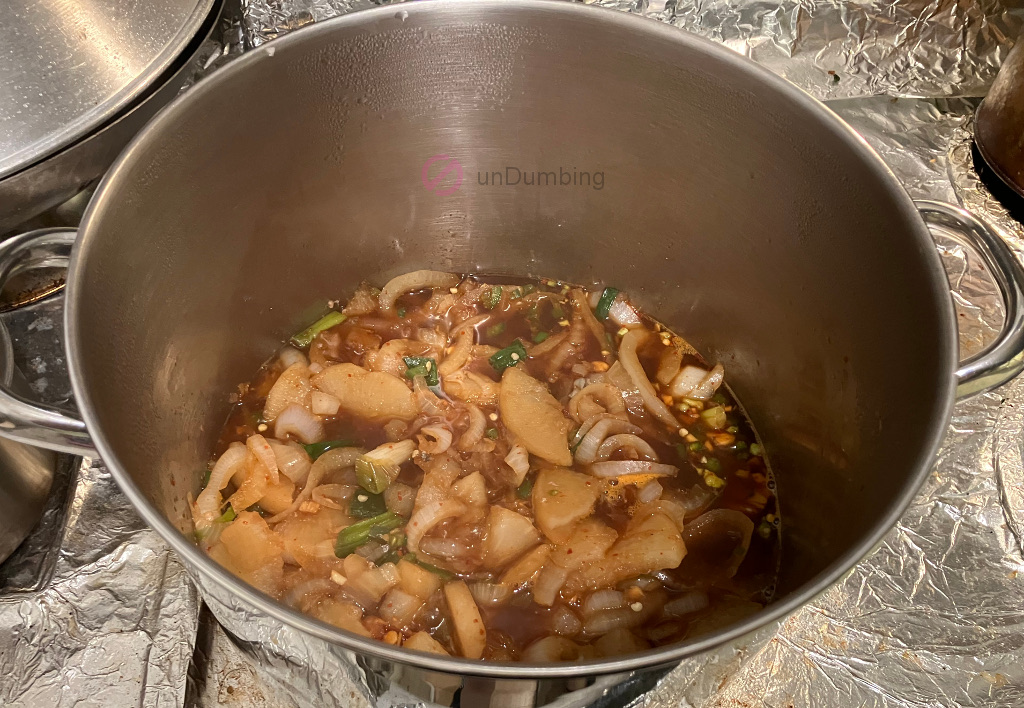
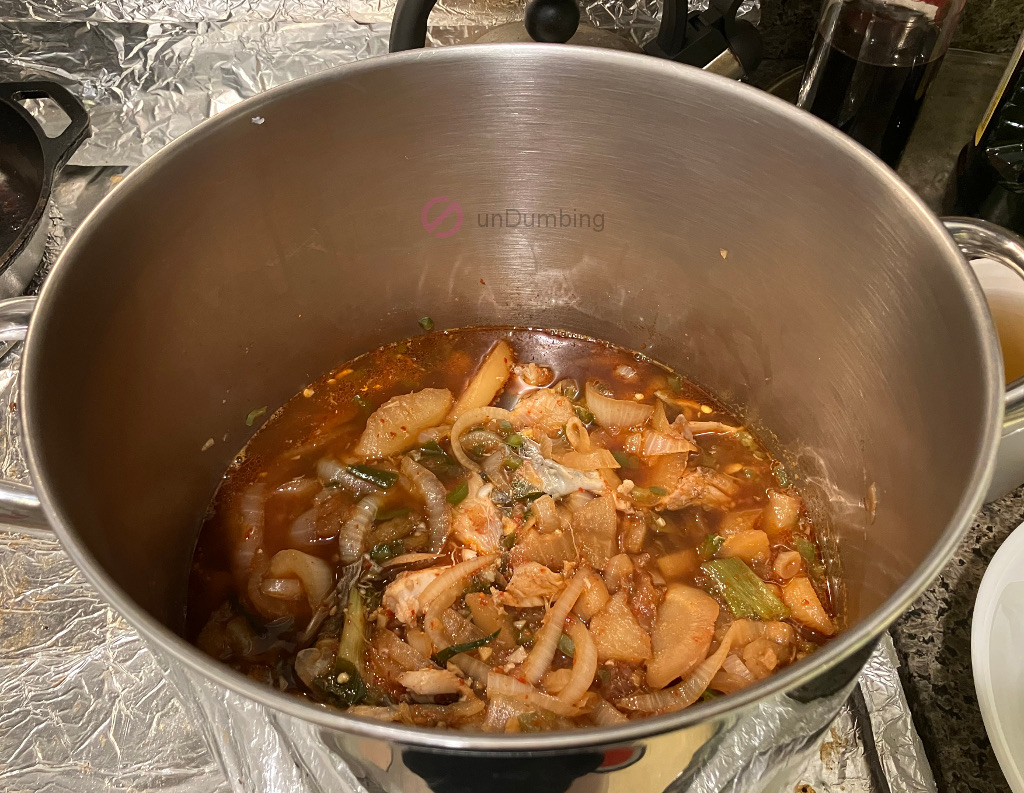
Time to Eat
With the broth and other ingredients, it was hard to see the fish, but the pieces were in the bowl!
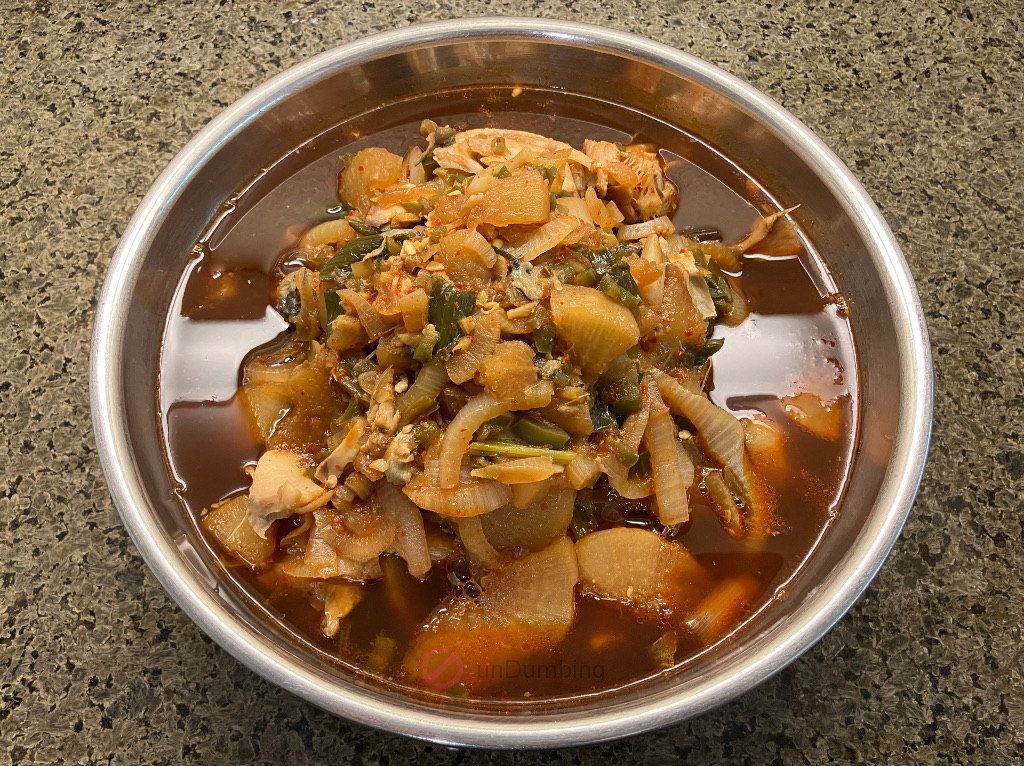
Recipe Rating
Below are the results of the recipe after the first try:
| # of Ingredients | Effort | $ / Serving | Try Again? |
|---|---|---|---|
| 10 * |

The flavor from the braised black cod was okay, but nothing stood out. Maybe I really needed to wait for the broth to evaporate more so the sauce would be more concentrated? Also, there didn’t seem to be enough pieces of fish to go around for the family.
Second Try
For the second round, I wanted to add more fish to the dish.
Ingredients to Use
After purchasing 3.03 pounds of black cod, I decided to aim for approximately half the proportion for the remaining ingredients. What I ended up using is as follows:
Main
- 1.62 pounds of daikon
- 1.69 pounds of onion
- 7 green onions
- 3 green chili peppers
Seasoning sauce
- 1/2 cup + 1/4 teaspoon of soy sauce
- 10 garlic cloves
- 1 1/2 tablespoons + 1/3 teaspoon of gochugaru (Korean hot pepper)
- 1/2 tablespoon + 1/4 teaspoon of sugar
This time, the fish was cut into 2-inch sections and the head was cut in half lengthwise.

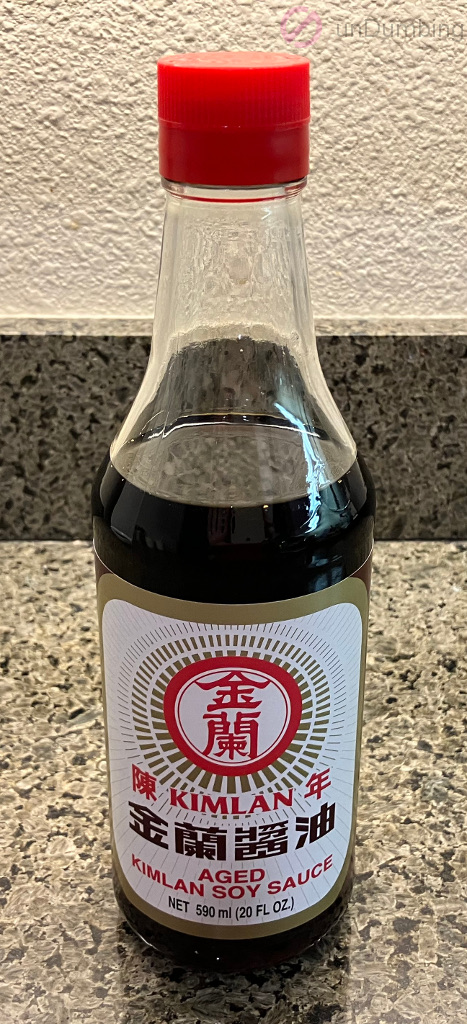
Steps to Prepare
For the process, I made slight changes as compared to the first round, as follows:
- Step 2 – Added 3 cups of water.
- Step 7 – Removed the pot from the heat after 5 minutes of simmering to prevent the fish from overcooking, even though the broth didn’t appear to have evaporated much.
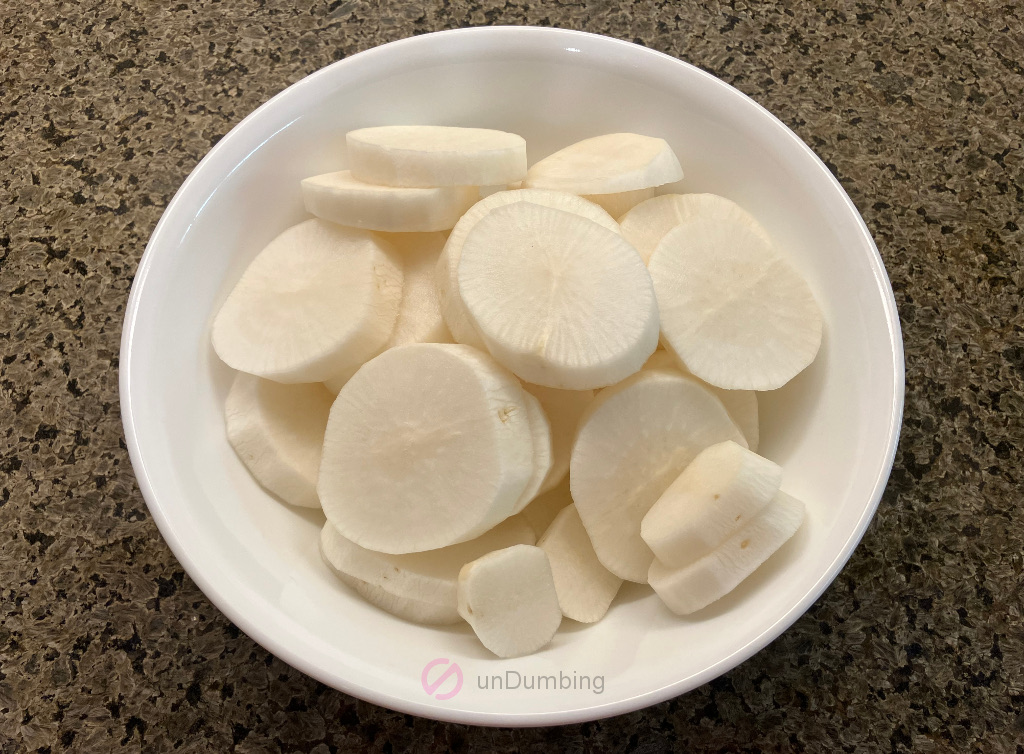
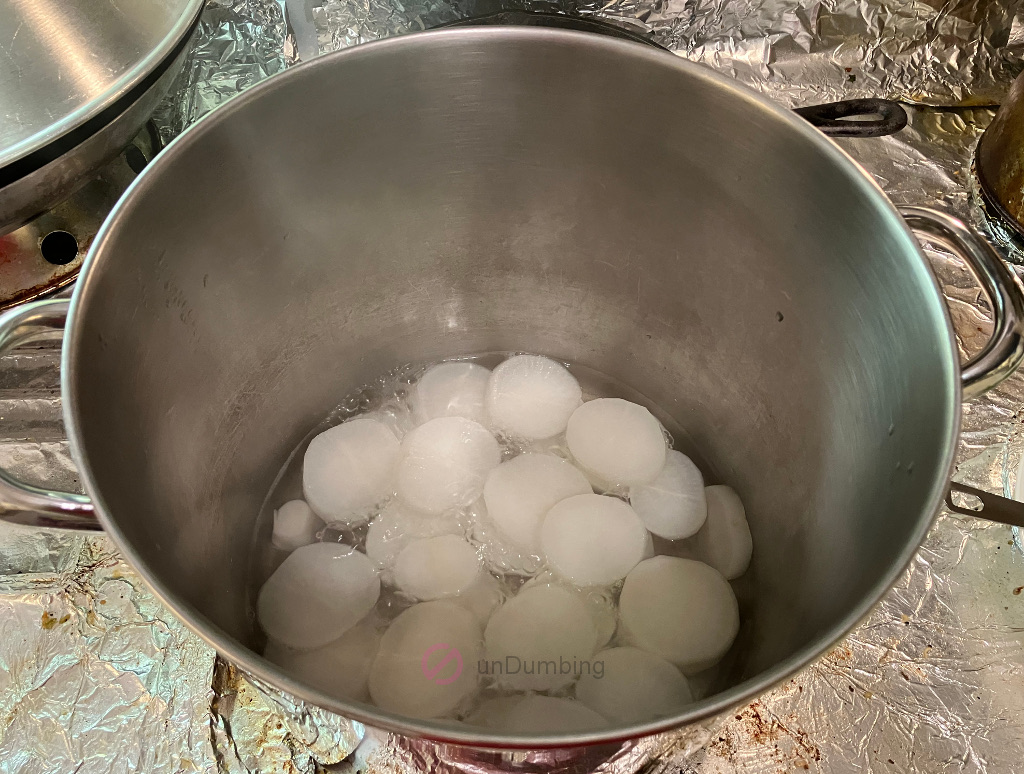
Time to Eat
The amount of black cod certainly looked more balanced as compared to the rest of the ingredients, as shown below.
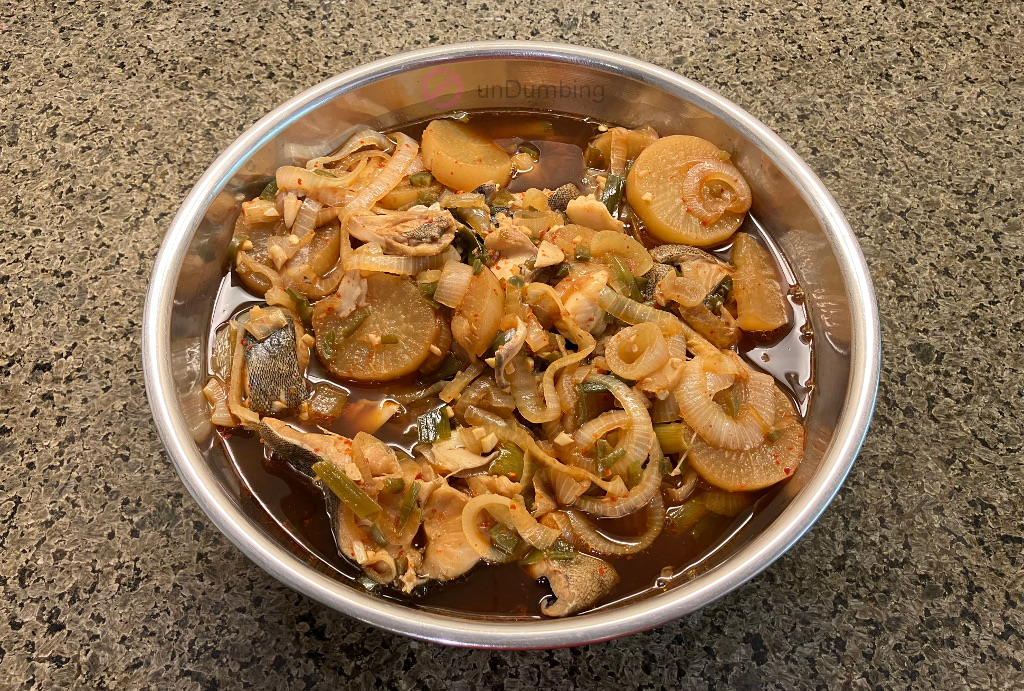
Recipe Rating
Below are the results of the recipe from the second attempt:
| # of Ingredients | Effort | $ / Serving | Try Again? |
|---|---|---|---|
| 10 * |

This time, I enjoyed the light fish broth with the red pepper flavor. In addition, the soft daikon was better than the Korean radish because it was not as bitter.
Because my family and I mostly ate the fish from the dish, I don’t plan on trying this recipe again. However, if I were to make something similar, I would try the following, so I would have less waste:
Continuous Improvement
- Substitute Korean radish or daikon with carrots and potatoes.
After testing this and the other Korean braised fish recipe, I learned that we haven’t developed the taste for Korean radish and daikon thus far. As a result, I would like to share the following with my younger self:
Lesson for Dumber Self
- Find a substitute ingredient for one that you haven’t acquired the taste for.
What will you do now?
Next Step for You
- Try the recipe, Braised black cod with radish, from the website, Maangchi?
- Share your favorite alternative to Korean radish and daikon for this type of recipe?
- Ask a question or leave a note in the Comment box below about this post?
